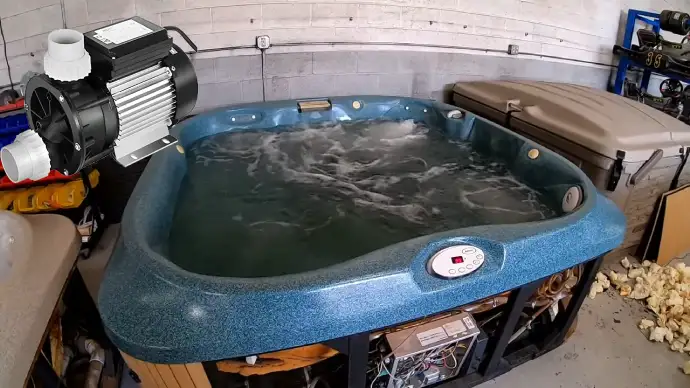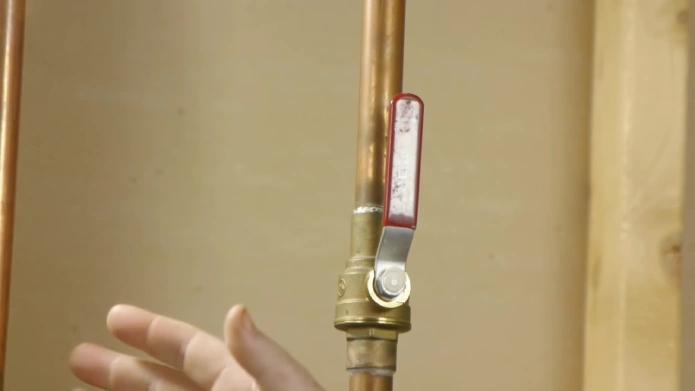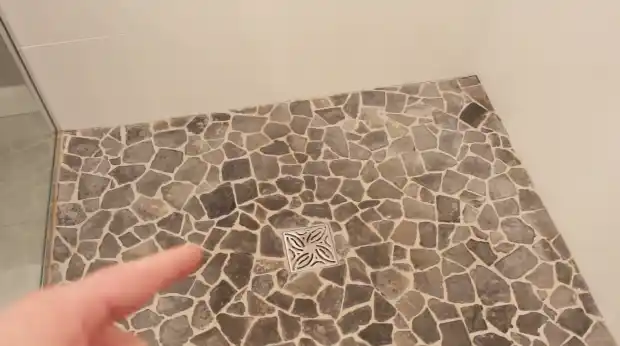Last Updated on June 3, 2023
Having the right size pump for your hot tub is essential to ensure that your hot tub operates appropriately and safely. The pump is responsible for circulating water, filtering it, and allowing jets to function as they should.
Generally, large jets require 15-20 GPM, while small swim spa jets require 1 Hp per jet. So it’s essential to consider factors such as horsepower, GPM, frame size, voltage, number of jets on the tub, and plumbing size and configuration when deciding what size pump you need for your hot tub.
Installing a properly sized pump can provide numerous benefits, including enhanced water quality, reduced energy costs, and better cleaning and safety. However, it’s important to note that using the wrong size pump can result in poor water circulation, damage to equipment, and safety hazards.
Let’s discover which size can help you get the most out of it, ensuring maximum efficiency and safety.
What Size Pump for Hot Tub: 6 Factors to Consider

Hot tub pumps are a crucial component of both portable and in-ground hot tubs, as they provide the necessary pressure to power the jets and circulate the water.
When shopping for a hot tub pump, there are 6 main considerations: horsepower, flow rate per minute, size of the frame, voltage, number of jets, and plumbing size & configuration.
1: Horsepower:
Horsepower is one of the most important factors when selecting a hot tub pump. The size of your hot tub will determine what kind of horsepower you need; generally speaking, smaller pumps have less horsepower, but larger pumps will require more.
Smaller pumps typically run at 1/20 to 1/8 HP, while more powerful pumps reach up to 5HP. Choosing a pump with too much or too little horsepower can lead to subpar performance or damage your hot tub’s plumbing system over time.
To ensure optimal performance, ensure your chosen pump has enough power for your needs.
2: GPM:
GPM stands for gallons per minute, which refers to how much water flow your hot tub pump can generate. Generally speaking, circulation pumps will move between 25 and 35 GPM, while small variable speed pumps may move up to 100 GPM or more depending on their size and power output.
If you’re looking for extra power, larger variable speed units can generate up to 260 GPM. Keep in mind that some systems may include two different types of pumps; one powers the jets while the second moves water through filtration cycles which requires less pressure than powering jets does.
3: Frame Size:
Frame size is another important factor when it comes to choosing a hot tub pump as it determines how well the motor can handle water pressure levels as well as how large its components are relative to other units available.
Ideally, you should look for a frame size that matches your particular model’s specific motor requirements. However, if you have an older model without any specific requirements, then opting for an oversized frame might be wise due to increased durability over time.
Benefits of Installing Pump in Hot Tub

Installing a pump in your hot tub can be super beneficial. Not only will it give you better water quality and reduce energy costs, but it will also keep the hot tub clean with enhanced safety. Enjoy enjoying some time to relax without any worries or hassle.
1. Enhanced Water Quality:
A pump installed in a hot tub helps keep the water clean and clear. It filters out any dirt or debris entering the tub, allowing for fresher and cleaner water. The filter also helps reduce bacteria growth, keeping the hot tub sanitary and healthy.
2. Reduced Energy Costs:
Adding a pump to your hot tub can also help save money on energy costs as it will only run when necessary. This is due to the heat exchanger which retains heat from the spa by using its own circulation system, thus reducing energy consumption when it is not in use. High-efficiency pumps are available for those looking for an even more cost-effective option.
3. Better Cleaning & Safety:
A hot tub pump also allows for better cleaning and safety as it circulates water continuously, preventing it from becoming stagnant or cloudy. This means no bacteria or other contaminants can build up, keeping the water safe and clean at all times.
Because of its circulation capabilities, the water is kept at an even temperature throughout the entire pool area, increasing comfortability for users who wish to take a dip.
Are More Pumps in a Hot Tub Better?

The number of pumps in a hot tub may signify something other than a better product. While some believe that more pumps equate to a better tub, the reality is much more nuanced. The number of jets refers to the total number of outlets from which water can be released and is not an indicator of quality or reliability.
Quality and value are better gauged by looking at other factors such as product quality, warranty, energy efficiency, filtration, and water care features. When considering a hot tub for purchase, focus on these factors rather than jet count.
How Often Do You Need To Replace A Hot Tub Pump?
Under normal circumstances with balanced water chemistry, hot tub pumps are expected to last approximately 7-10 years before needing replacement.
Of course, this timeline can be shortened if the water is not well maintained or if there are issues with the pump, such as seal breakdown due to damage caused by hard water or chemicals in the pool.
Regular maintenance checks help identify potential problems before they become severe enough to require full pump replacement.
Can You Put Any Type of Pump In A Hot Tub?
Installing a sump pump in a hot tub is important to ensure the tub is properly drained and the plumbing system is maintained. A sump pump is designed to remove water from an area, typically below ground, by pumping it away from the area.
In a hot tub, this might include draining excess water that has been collected in the filter basket or even on the bottom of the tub. Sump pumps are typically installed outside the hot tub and can be connected to either a garden hose or a drainage pipe.
The pump should be strong enough to handle overflow and always be turned off when not in use. Installing a sump pump is an important aspect of maintaining your hot tub’s plumbing system and the health of your spa environment.
How Do You Choose The Right Sump Pump For A Hot Tub?

Our review of the best sump pump for hot tub includes 4 essential elements: horsepower, automatic on/off switch, durable material, and good compatibility. The most important is the horsepower rating, which determines how powerful the pump is and how long it will last.
Look for sump pumps with an automatic on/off switch, as this simplifies operation and ensures the pump is turned off when not needed. Durability should also be taken into account. Ensure that the material used in construction is suitable for long-term use in a wet environment.
Ensure that the sump pump you choose is compatible with other parts of your hot tub system to integrate seamlessly. By evaluating each of these criteria carefully, you can rest assured that you’re getting the best sump pump to suit your needs.
How Many Hours a Day Should You Run Your Hot Tub Pump?
Manufacturer recommendations should always be followed when running your hot tub pump. As a general rule of thumb, it’s suggested that you leave your pump on for at least 8 hours per day.
Since the pump circulates warm water and sanitizers through the system, this ensures proper operation and helps keep your hot tub clean and hygienic over time.
In some cases, you may need to leave your pump running for longer than 8 hours, depending on manufacturer guidelines or local regulations. Always check these before determining how long your pump should run daily.
Is It Better To Have 1 Or 2 Pumps in a Hot Tub?
When it comes to hot tubs, deciding whether to install one or two pumps is a personal preference. A single pump system is typically less expensive, easier to install, and uses less electricity. This can be a good choice for those who want an economic soak experience.
On the other hand, having two pumps provides more power and bigger jets, making it an ideal choice for people who want a more intense hot tub experience. In addition, two-pump systems provide greater control over water flow and allow for more powerful jets.
High-end hot tubs may even have up to three pumps for extra power. Ultimately, the number of pumps you choose will depend on your individual preferences and budget.
Can You Use a Pool Pump For Your Hot Tub?

It is not recommended to use a pool pump for a hot tub. This is because hot tub pumps are designed specifically to handle the specific water conditions of a hot tub, and the flow rates from pool pumps need to be higher.
Hot tub pumps have to be able to quickly move the smaller body of water that fills the tub through its jets, so having too low of a flow rate will not create adequate pressure for the jets. As such, investing in a specifically designed pump for your hot tub is important to ensure proper performance.
Can You Put a Higher Hp Pump in Your Hot Tub?
It is possible to put a higher horsepower pump into your hot tub, but there are some important considerations first. Increasing horsepower can increase water flow and jet performance and put additional strain on plumbing and components.
Therefore, it is essential to consult with either the manufacturer or a professional technician before installing a higher-horsepower pump. This ensured that all components would be able to handle the extra pressure.
If you decide to install a higher horsepower pump, it is best practice to increase the horsepower in increments of 0.5-1 to avoid causing damage or overworking components.
Choose the Right Hot Tub Pump for Optimal Performance
Choosing the appropriate size pump for your hot tub can make all the difference in achieving the optimal performance of your system. Taking into account factors like HP, flow rate, frame size, voltage to run, number of jets, and plumbing configuration will help you determine the best option for your particular needs.
Installing a properly sized pump brings many benefits, including improved purity, energy savings, and better cleaning & safety. It’s important to remember that using an incorrect-sized pump can cause issues with circulation and present potential safety risks.




too much general information. nothing specific. example: horsepower, make sure have enough. Enough for what? give some requirements.
Thank you for your input! I understand what you mean—sometimes, broad advice isn’t enough when you need specific details. Let me clarify:
For horsepower, it’s not just about having “enough.” The size of your hot tub dictates the horsepower required. Smaller pumps generally run between 1/20 to 1/8 HP, which is suitable for compact tubs. Larger hot tubs need more power, with pumps going up to 5 HP. Choosing a pump with too little or too much horsepower can either reduce performance or risk damaging your system.
GPM, or gallons per minute, is also crucial. Circulation pumps typically handle between 25 and 35 GPM, but if you need more power, some pumps can push up to 260 GPM. This is especially important if your system uses separate pumps for jets and filtration, as each requires different pressure levels.
Lastly, the frame size is important because it determines how well the motor handles pressure and whether the components fit your hot tub. If your model doesn’t have specific frame requirements, choosing an oversized frame can provide extra durability.
I hope this clears things up! Let me know if you have any other questions.